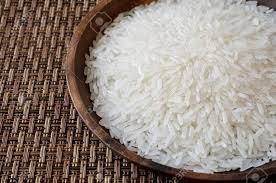
Kilusang Magbubukid ng Pilipinas and Bantay Bigas, August 2023
I. India’s rice export ban and its impacts
- Experts have warned that India’s rice export ban could trigger a global food crisis and cause mayhem in the markets. True enough, right after India declared last July 20, 2023, that it will ban exports of non-basmati rice, the global rice price index surged to over 12-year highs while prices of internationally-traded food commodities including wheat, vegetable oil, and sugar have risen for the first time in months.
- India said the rice export ban was primarily to tame its rising domestic inflation, now at 4.5% and affecting vegetable, fruit, and grain prices. The ban will unlikely be lifted until the country’s general elections in April 2024. Earlier in September 2022, India already banned shipments of broken rice. This means up to 40% of India’s rice exports are now off the market.
- India is the world’s top exporter of rice. It accounts for about 40% of the global rice trade. Thailand (15%), Vietnam (14%), Pakistan, and the U.S. are the other top exporters. The long-grain Indica white rice variety dominates around 70% of the global rice trade, and India has now ceased its export.
- In 2022-2023, India exported 22.3 million tonnes of rice valued at over $11.1 billion to 140 countries. (Six million tonnes was the cheaper Indica white rice). The estimated global trade in rice was 56 million tonnes.
- Among the major buyers of imported rice are China, the Philippines, and Nigeria. Countries like Indonesia and Bangladesh are considered “swing buyers” who step up imports only when they have domestic supply shortages. Besides Asia, many African and Middle East nations are also vulnerable to the export ban. The poorer populations in India’s neighbors, Bangladesh and Nepal, will be the hardest hit.
- According to a recent analysis from Barclays, Malaysia appears to be the “most vulnerable” from the export ban, highlighting the country’s significant reliance on Indian rice. The same report said the Philippines would be the “most exposed to a rise in global rice prices.”
- Other markets highly exposed to India’s export restrictions are concentrated in Sub-Saharan Africa and in the Middle East and North Africa (MENA) region. Countries like Djibouti, Liberia, Qatar, the Gambia, and Kuwait as being the “most exposed.”
- This is not the first time that India restricted its rice exports. In October 2007, India imposed a ban on non-basmati exports, only to temporarily lift the ban and impose it again in April 2008. Back then, global rice prices tripled in the span of six months. Forecasts state that the current ban has “a more far-reaching impact” than 16 years ago.
- India’s role in the global rice trade is, in many ways, similar to that of Indonesia and Malaysia in palm oil. While rice has more suppliers — Thailand, Vietnam, Pakistan, U.S., and Myanmar — they cannot fill the vacuum left by India. A surge in world prices is, therefore, inevitable.
Surging global rice and food prices
Global rice prices rose by 2.8 percent in July 2023 from a month earlier, and 19.7 percent this year to reach their highest level since September 2011, according to the FAO. Global rice prices have been steadily rising since early 2022, with an increase of 14% since last June.
- Rising fertilizer and fuel prices have contributed to increased production costs.
- The ongoing war in Ukraine and Russia’s termination of the Black Sea Grain deal have also constrained the global supply of wheat and corn, raising the demand for rice as an alternative staple. (The Black Sea Grain Deal is a critically important wartime deal that provided a maritime humanitarian corridor for the export of Ukrainian grain.)
- Aside from its export ban, India also imposed a 20% duty on exports of various grades of rice. The new duty is likely to discourage buyers from making purchases from India and prompt them to shift towards Thailand and Vietnam, which have been struggling to increase shipments and raise prices.
- IFIs are worrying about runaway global rice prices. IMF chief economist Pierre-Olivier Gourinchas said the export ban would drive up prices and that global grain prices could rise up to 15% this year.
- While agricultural commodity prices have come down from the peaks of mid-2022, they remain high. At the end of 2022, the global price of maize was up 29% and wheat was up 34% since January 2021.
- The global price of wheat, the most actively traded agricultural commodity also increased in July.
- Vegetable oil prices have seen a significant increase of 12.1% in July after continuously falling for seven months. The FAO attributes this increase to renewed uncertainties surrounding sunflower oil supplies following the end of the grain deal.
- Global sugar prices increased by 41.9% in the past 12 months according to global industry data. Prices will remain elevated in the short to medium term, citing weather risks plaguing top sugar producers.
- India is the world’s second-largest sugar producer after Brazil. In April 2023, the All India Sugar Trade Association trimmed its sugar production estimates by nearly 3% for the crop year spanning October 2022 to September 2023. It cited unseasonal rainfall in Maharashtra, which accounts for more than one-third of the country’s sugar output.
- Another factor pushing sugar prices higher is OPEC’s surprise decision to slash oil output by around 1.16 million barrels per day. That has encouraged the diversion of sugarcane toward ethanol production and away from sugar supplies
Effects of El Nino and climate change on the global rice and food production
- The latest El Niño event has begun. The effects on rice production and supplies are expected to be severe and there is a concern about food inflation, especially across Asia where 90% of the world’s rice is grown and eaten.
- The warmer, drier weather is expected to hamper rice production across Asia, hitting global food security in a world still reeling from the impacts of the war in Ukraine.
- The last El Niño event of 2015-2016 affected 60 million people globally. In Southeast Asia, the warmer temperatures and prolonged drought resulted in an output decline of 15 million tonnes of rice. The drastic drop in rice production resulted in the global price of rice increasing by 16 percent.
- While the strength of the 2023-24 El Niño event is yet unknown, the unprecedented ocean warming since the early months of 2023 could result in record-breaking temperatures in 2024. Analysts are predicting a shortfall in rice production — a possible worst shortfall in 20 years, surpassing the shortfall in 2015-2016. This shortfall affects the amount of rice available for consumption. The reduction in surpluses for export will also affect all major rice importers in Southeast Asia, which includes Indonesia, the Philippines, Malaysia, and Singapore.
The global rice production situation is primarily caused by warmer, drier weather and erratic rainfall damaging rice production throughout Asia. In the past months, torrential rains and floods in northern India have damaged many rice fields.
- Rice supplies are under strain, given that the arrival of the new crop in the markets is still about two to three months away. Inclement weather in South Asia – uneven monsoon rains in India and floods in Pakistan – has affected supplies.
- Vietnam is the world’s second-largest exporter of rice and 80 percent of it is grown in the Mekong Delta region, a vast flood plain, and one of Asia’s most fertile agricultural zones. Ten years ago, Vietnamese rice farmers said their rice production is threatened because of rising sea levels and temperature increases attributed to climate change. Among the risk factors include droughts, excessive groundwater withdrawals, and subsequent saltwater intrusion up to 90 kilometers into the Mekong Delta.
- As of July 2023, rice prices in Vietnam have surged to their highest level in more than two years due to tight supplies and concerns about the impact of the El Nino weather pattern on production. The average price for Vietnam’s 5% broken rice reached US$498 per metric ton.
- Vietnam has announced a plan to switch exports to higher quality rice, effectively cutting rice exports from the current 7.1 million tonnes to 4 million tonnes by 2030; the switch will happen gradually from 2023 onwards.
- Thailand’s 2023 rice output may drop by as much as 6%, to between 25.1 and 25.6 million tonnes, due to the impacts of El Niño, according to a forecast by the Kasikorn Research Centre (KRC). It also warns that the anticipated rice output may be much lower if the drought is prolonged and causes more damage to the crops.
Thailand’s KRC also warned a prolonged El Nino will have an impact on both main and second-crop cultivation next year. Meanwhile, the Royal Irrigation Department of Thailand is urging farmers in the Chao Phraya River basin to suspend second-crop cultivation to conserve water and avoid loss, and instead switch to other drought-tolerant crops.
- Combined, India, Thailand, and Vietnam account for more than half the global rice export (approximately 21, 6, and 5 million tonnes respectively in 2021). Production declines due to El Nino will have huge implications on the supply of rice not only in Southeast Asia but across the world. ###
*1 tonne = 1000 kilogram
References:
https://www.bbc.com/news/world-asia-india-66360064
https://edition.cnn.com/2023/08/03/business/india-rice-export-ban/index.html



